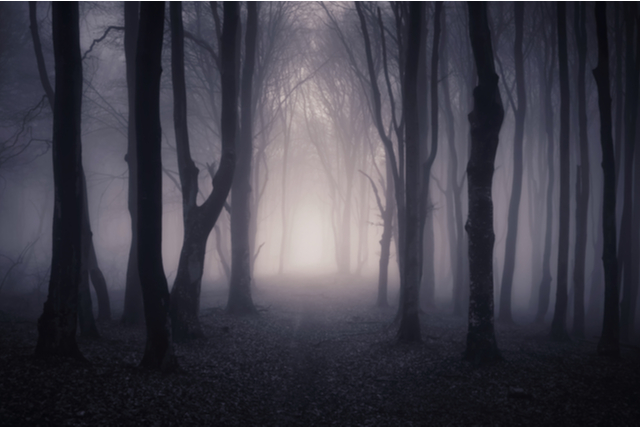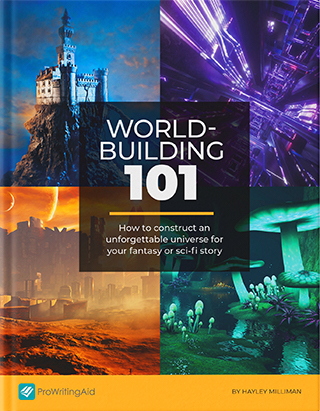
New writers often miss the opportunity to improve their writing by fully developing their story’s setting. While setting serves as a backdrop in all stories, it is far more than when and where.
What Does Setting Do?
Setting provides the space and place for the story to unfold, but it also imbues atmosphere and mood, tension and conflict. It can stand as a symbol for a situation, for a person, or for a concept. Setting also can operate as a character and can add depth and richness to your plot and theme.
No Setting Isn't Always a Problem
Can a story take place in Anytown, Anytime? Can the scenes play out before a mere curtain the same way a play is acted out in front of a stage set?
Sometimes.
Let's look at an example. The stage adaptation of Henry James’s story The Turn of the Screw had minimal stage setting, no props, and no costume changes. How did they make this work? The director, cast, and crew went to great lengths in other areas to aid the audience in using their imagination to fill in the “blanks.” The actors used different physical and vocal nuances for each character, and lighting was used to set the tone of each scene. The lack of a stage set was a deliberate choice supported by other well-calculated methods for establishing location and mood.
With the right approach, it’s certainly possible for a story to occur in an indeterminate place and/or time. But that lack of setting would need to be a calculated decision by the author and would have to benefit the story without confusing readers. Moreover, the other elements of story development would have to be expertly executed to make up for the lack of setting.

Having no setting at all is a tricky balancing act. Instead, I like to think of setting as a tool used to support the other areas of my writing. Here are some ways you can think about setting:
Setting as Character
Setting can operate in either the main plotline or a subplot as an obstacle or challenge for the main character to face.
Person versus Nature stories are the clearest examples of setting as an antagonist force. Cormac McCarthy’s The Road and Orhan Pamuk’s Snow contain landscapes and environmental conditions that the characters must endure or overcome. The settings in these novels hinder the main characters in their individual quests in the same way that a human character can.
How main characters interact with and respond to the setting, proactively and reactively, can reveal the depth and complexity of the characters to the reader, which should support the story’s plotline and theme.
Setting as Symbol
A scene set in a traffic jam could symbolize the main character’s “stuckness” in his or her life. A significant object within a setting, such as a mountainside or a cliff, could also stand as a symbol related to the story’s theme.
In The Lord of the Flies, author William Golding uses setting to reflect and represent the darkest aspects of human nature.
Setting as Atmosphere
Characters are influenced by both the natural and artificial elements of their physical surroundings. The tangible and intangible features of a setting combine to create an emotional state, a tone, or a mood for a scene or a story. Light levels, smells, temperature, colors, sounds, and other sensory details can affect your main character and influence different characters in different ways.
One character might find an early morning rain to be a refreshing and welcome event, washing away pollen and leaving behind a glistening landscape. Another might find the gray dampness of a rain shower first thing in the morning to be depressing, which might drive them to do things the other characters would never do, thus affecting the plot.

The Basics of Writing Setting
We, as humans, don’t operate in the world without constant references to place and time. Our routines are marked by calendars noted with holidays and special events. The framework of our memories includes place and time, anchored by details such as a smell in the kitchen or a color in the sunset.
Readers need markers like these as well. They expect, at a minimum, to receive some orientation about the location and the time of a story. At its most fundamental, setting informs readers about where and when the story occurs. Without these, the characters would seem to drift about aimlessly, hovering in a groundless world.
So, where and when are the two most basic factors for grounding your reader. But the potential for setting to enhance your story is far greater if other essential elements are considered too.
Key Elements of Setting
Three broad categories comprise setting:
- Location
- Time
- Society and culture
Within those categories are key elements for you to consider in developing your story’s setting. It isn’t necessary to include every element discussed here in your stories, but by asking yourself the right questions and interweaving the aspects that are relevant and revealing, your story’s setting—and your story, in general—will be more believable to your readers.
Location
Decisions about location should be made early in your writing process as this aspect of setting will have more effect on your characters and plot than any other element. Your choices about location will inform other decisions you’ll need to make including, among others, your story’s social environment, the flora and fauna, character dialects and speech patterns, culture, politics, and weather.
Location as an element of your setting should be considered through both a wide-angle lens and then on a closer scale. Genre authors (like fantasy writers) develop location on the widest scale, going deeply into world-building, sometimes creating entire universes. But that sort of expanse might not be applicable to your story. The general locale (country, state, region, or city) might be more relevant.
The geography and physical landscape you choose for your story could affect your plot and characters. Decide whether your story’s setting is urban or rural. Characters in densely populated settings will navigate their lives differently than those who inhabit vast, open expanses. A scene on a mountaintop will be quite different from one that plays out on a beach or inside a cave.
Don’t forget about human-made landscapes too, such as amusement parks or high-rise buildings. But maybe your story doesn’t happen on terra firma at all. Perhaps your characters are in space, on a ship, or in an airplane.
Examining location at the most precise level, every scene will include your characters’ immediate surroundings, the physical features and tangible objects in the spaces nearest them. And when you’re developing this intimate space, don’t forget the intangible aspects – all the possible sensory elements within that setting that could influence your characters and plot and make the setting believable.
Other aspects that must be portrayed accurately for your story’s chosen location are climate and weather. Unless you’re writing an apocalyptic tale, your characters won’t experience a blizzard in Fiji. A plot that unfolds in a harsh, frozen environment could hold direr consequences and greater challenges for your protagonist than one that happens in a calm and temperate climate.
Another aspect of location to consider is nature. This is usually more important for stories in a rural or remote setting, although elements of the natural world—rats, spiders, cats, pigeons, potted plants—can appear in stories with an urban setting.
Time
Just as for location, time in your story should be considered from a broad scale down to the specific. Does your story take place during a significant time in history such as the Elizabethan era, the Roaring Twenties, or the Macedonian era? From this wide-angle view, the year(s) in which your story happens might influence your characters as well as the plotline.

Now consider, what is the passage of time over the duration of your story, beginning to end? Is it years? months? days? If you’re writing a short story, it might even be hours or minutes.
Will the season in which the story happens affect your characters and plot? Does your story timeline encompass holidays or other significant events, either real ones such as Christmas or Passover, or ones you’ve imagined for your story such as a character’s birthday or a funeral?
Finally, on an even closer level, the time of day or night in a particular scene could influence your characters’ behaviors and activities, and perhaps the plot too.
Society and Culture
Various aspects of society and culture contribute to a story’s setting. The values, mores, and morals of a population or region provide social context for the story, as would the political environment, if politics are relevant for the story you’re telling.
Culture contributes to creating a believable setting in the form of local or regional customs, events such as festivals or religious services, personal or community rituals, hobbies, cuisine, social and family roles, and occupations.
Writing great story setting will set you up for success!
Every aspect of the setting you design for your story will influence how readers interpret and internalize your characters, the situations they find themselves in, and the choices they make. But pages of description aren’t necessary to create an appropriate setting for your story. Well-chosen, specific, and relevant setting details can create a believable setting and a realistic experience for your readers.


